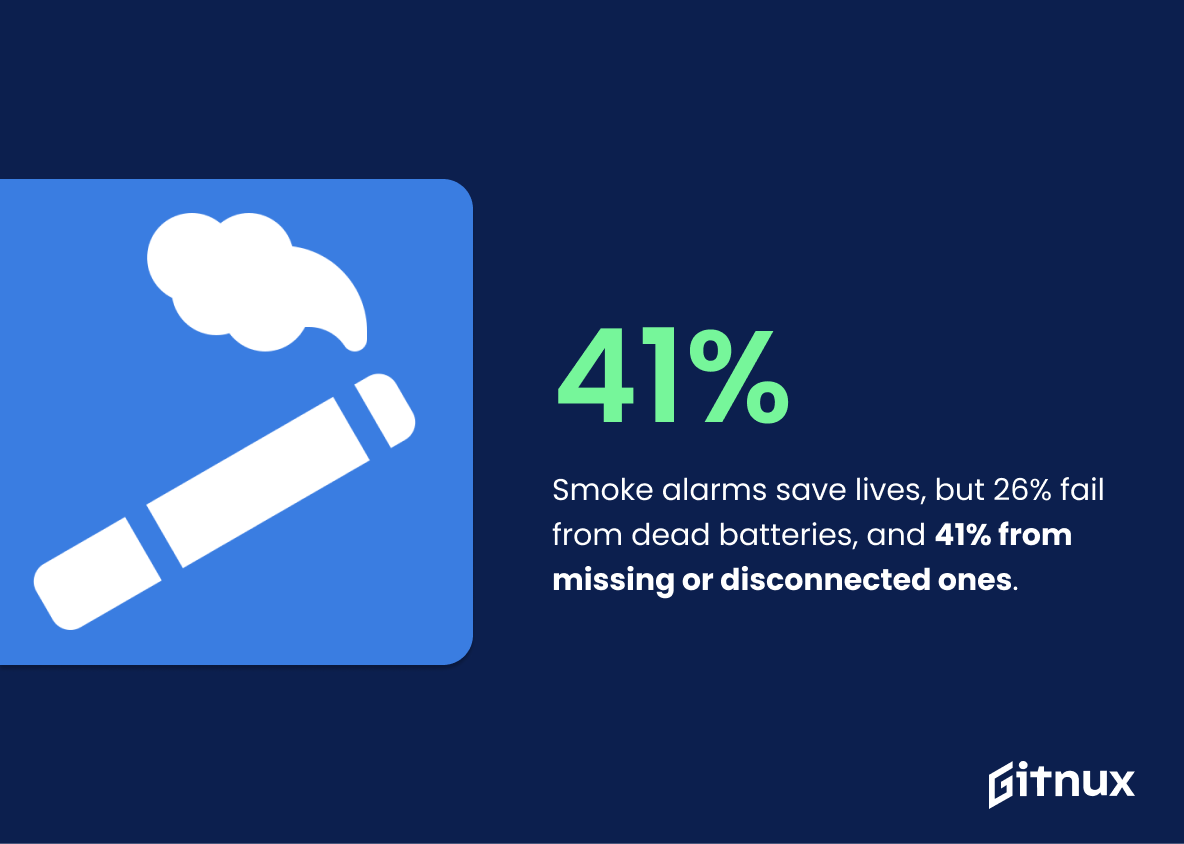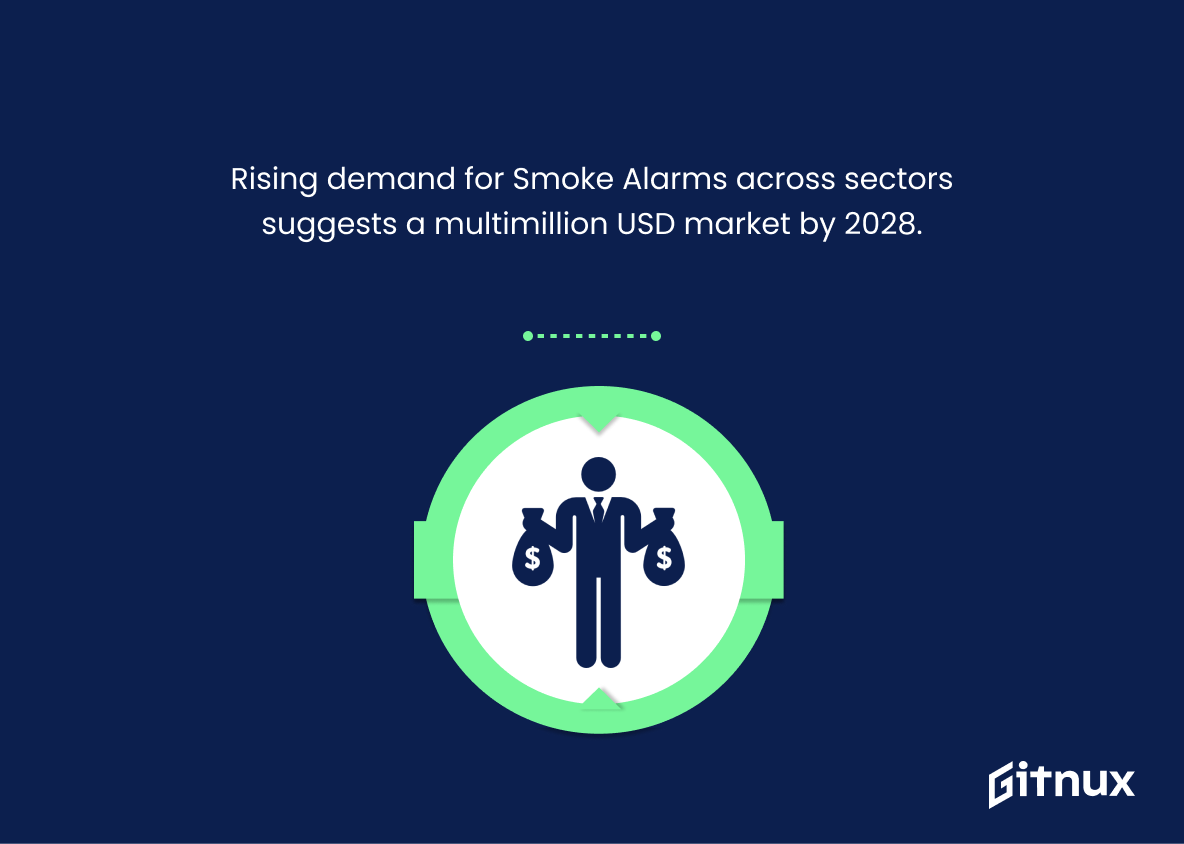Smoke alarms are a critical tool in keeping your home safe from fire. They are designed to detect smoke and alert you to a potential fire, giving you time to escape and call for help. But how effective are smoke alarms, really? In this blog post, we’ll take a look at the statistics to find out.
We’ll explore how often smoke alarms save lives, the most common causes of home fires, and the best ways to ensure your smoke alarms are working properly. Read on to learn more about the importance of smoke alarms and how to keep your family safe.
Smoke Alarm: The Most Important Statistics
94% of fires with hardwired smoke alarms and 82% of fires with battery-powered alarms were triggered, but 41% of smoke alarms failed to operate due to power source issues.
The global smoke detector market is expected to grow at a CAGR of 8.7% from 2021 to 2028, reaching USD 3,808.63 million by 2028.
Smoke Alarm Statistics Overview
Smoke alarms are essential for reducing fire deaths and injuries, but 26% of smoke alarm failures are due to dead batteries and 41% are due to missing or disconnected batteries.
They are essential for providing people with the time they need to escape a fire, but if the batteries are dead or disconnected, the smoke alarm will not be able to alert people of a fire. Therefore, it is important to regularly check smoke alarms and replace the batteries when necessary.
53% of home fires reported to U.S. fire departments had smoke alarms that sounded, indicating that smoke alarms are effective in giving people time to escape a fire.
Smoke alarms powered by battery only are significantly less effective than those with working smoke alarms, leading to almost double the death rate per 100 reported home fires.
This highlights the importance of having working smoke alarms in the home. Having smoke alarms in the bedrooms is especially crucial, as it increases the likelihood of a sounding alarm waking someone who is asleep when a fire starts.
94% of fires with hardwired smoke alarms and 82% of fires with battery-powered alarms were triggered, but 41% of smoke alarms failed to operate due to power source issues.
The global Smoke Detector Market size is expected to reach $3,405.7 million in 2027, growing at a CAGR of 8.3% from 2020 to 2027 due to the increased demand for photoelectric and dual sensor detectors.
This shows the growing demand for smoke detectors in both residential and non-residential buildings, and the potential for growth in developing and under-developed countries. It also indicates the need for greater awareness and education about the importance of smoke detectors and their potential to prevent fires.
The smoke detector market is expected to witness a CAGR of 8.3% over the forecast period due to the growth of the commercial realty sector and IT industry, implementation of residential safety standards, and the amalgamation of smartphones.
The Global Smoke Alarm Market is projected to reach multimillion USD by 2028, growing at an unexpected CAGR of 3.4% during 2021-2026.
There is an increasing demand for Smoke Alarm in multiple sectors. This also shows the potential for the market to reach multimillion USD by 2028.
The global smoke detectors market size will grow from $2.03 billion in 2022 to $2.08 billion in 2023 at a compound annual growth rate (CAGR) of 2.5%, driven by the increased number of fire incidents in commercial and residential places.
The global smoke detector market is expected to grow at a CAGR of 8.7% from 2021 to 2028, reaching USD 3,808.63 million by 2028.
The market for smoke detectors is experiencing significant growth due to increased focus on safety in homes and changes in building standards and regulations. This growth is further supported by the requirement for smoke alarms in large residences.
Conclusion
In conclusion, smoke alarms are an essential tool for keeping your home and family safe. They are relatively inexpensive and easy to install, and they can save lives in the event of a fire. The statistics on smoke alarms are quite alarming, as they demonstrate that many homes do not have working smoke alarms.
It is important to make sure that your home is equipped with working smoke alarms and that they are tested regularly. Taking these steps can help to ensure that your family is protected in the event of a fire.
References
1 – https://www.nfpa.org/Public-Education/Staying-safe/Safety-equipment/Smoke-alarms#:~:text=Facts%20and%20figures%20about%20smoke%20alarms&text=Almost%20three%20of%20every%20five,working%20smoke%20alarms%20(16%25).
2 – https://www.bethesdafire.org/safety/smoke-alarm-safety/
3 – https://www.nfpa.org/-/media/Files/News-and-Research/Fire-statistics-and-reports/Fact-sheets/SmokeAlarmsFactSheet.ashx
4 – https://www.nfpa.org//-/media/Files/News-and-Research/Fire-statistics-and-reports/Detection-and-signaling/ossmokealarms.pdf
5 – https://www.alliedmarketresearch.com/smoke-detector-market
6 – https://www.mordorintelligence.com/industry-reports/smoke-detector-market
7 – https://www.marketwatch.com/press-release/smoke-alarm-market-statistics-2023-industry-demand-prominent-players-strategies-size-swot-analysis-and-forecast-2028-2023-01-10
8 – https://www.thebusinessresearchcompany.com/report/smoke-detectors-global-market-report
9 – https://www.databridgemarketresearch.com/reports/global-smoke-detector-market
10 – https://www.mordorintelligence.com/industry-reports/smoke-detector-market






